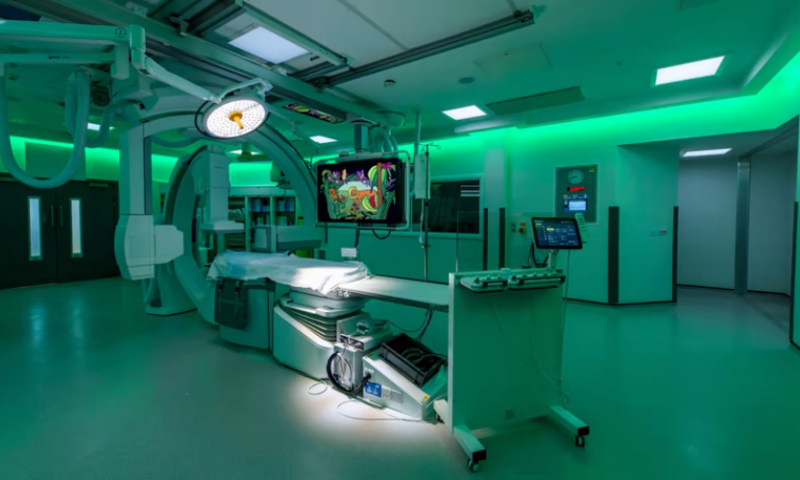Undergoing a medical procedure is always a stressful prospect for a patient—so much so that, at times, anxieties are simply considered unavoidable.
But Philips is looking to make the entire experience just a little less scary. Previously, the company’s addition of relaxing lighting and videos of calming scenes, or even cameos by a child’s favorite cartoon characters, were aimed at making MRI scans an easier pill to swallow for adults and pediatric patients alike.
There, the benefits can be obvious: A clear image requires the patient to lie still and breathe slowly despite being surrounded by heavy, powerful and largely inscrutable machinery.
Now, Philips aims to bring the same atmosphere to interventional rooms for cardiovascular procedures. Dubbed the Ambient Experience, the system connects with the company’s Azurion image-guided therapy system, using its large display screens to portray more tranquil locales as the patient first enters the room.
It can also play videos that help educate the patient about the particulars of the procedure itself, or even connect to their own media. Philips unveiled the expanded offering during the annual meeting of the American College of Cardiology (ACC).
Guiding a catheter through a patient’s blood vessels during a minimally invasive procedure, it goes without saying, also depends on having them lie still—something typically achieved through the use of sedatives and general anesthesia.
However, crafting a more positive experience to help reduce a patient’s initial anxiety levels, which may reach a peak in the moments just before a procedure, can ultimately allow physicians to rely on lower doses of anesthesia drugs.
Elsewhere at the ACC meeting, Philips rolled out a vendor-neutral workspace to analyze ultrasound images from 2D and 3D echocardiography scans that includes artificial-intelligence-guided tools for measuring the heart’s performance.
The diagnostic system integrates with electronic medical record platforms and digital image repositories and leverages the same interface whether it’s being used on an ultrasound cart, in the exam room or remotely in an echo lab.

